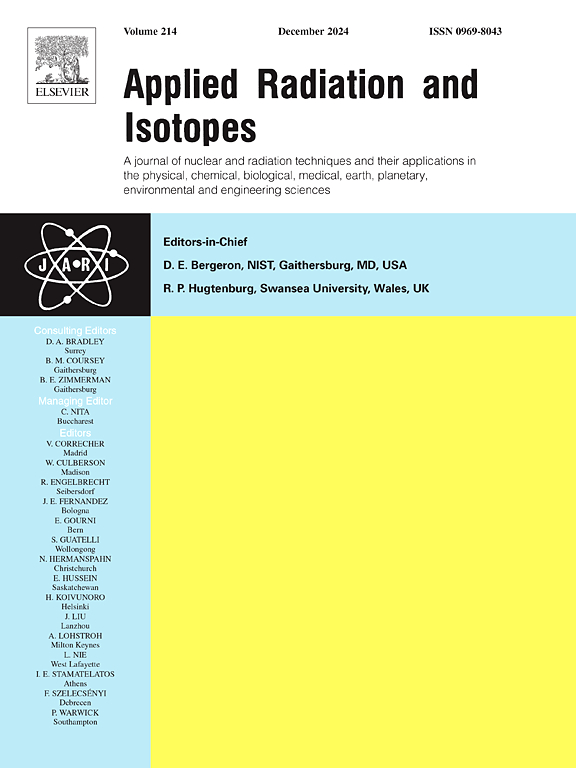基于差分进化算法的LaBr3探测器模型优化
IF 1.6
3区 工程技术
Q3 CHEMISTRY, INORGANIC & NUCLEAR
引用次数: 0
摘要
在伽马射线能谱中,计算检测器模型允许在没有体积校准标准的情况下,确定具有不同化学成分的非标准源的绝对检测器效率。本研究的重点是基于表征数据开发LaBr3(Ce) 1.5“× 1.5″闪烁探测器的计算模型。利用137Cs和152Eu点校准源相对于探测器帽放置在不同位置,对探测器进行了表征。使用基于蒙特卡罗方法的MCNP6代码进行了建模。初始建模结果显示探测器响应的计算值与实验值存在偏差,需要对模型进行优化。采用差分进化算法对探测器参数进行优化。为了验证优化后的LaBr3模型,我们用体积氯化钾源进行了研究。计算结果与实验结果的偏差在误差范围内。本文章由计算机程序翻译,如有差异,请以英文原文为准。
Optimization of the LaBr3 detector model using differential evolution algorithms
In gamma-ray spectrometry, computational detector model allows determining absolute detector efficiency for non-standard sources with varying chemical compositions in the absence of volumetric calibration standards. This study focuses on developing a computational model of a LaBr3(Ce) 1.5" × 1.5″ scintillation detector based on characterization data. The detector was characterized using 137Cs and 152Eu point calibration sources placed at various positions relative to the detector cap. Modeling was performed using the MCNP6 code based on the Monte Carlo method. The initial modeling results revealed deviations between the calculated and experimental detector responses, which required model optimization. Optimization of the detector parameters was carried out using differential evolution algorithms. To verify the optimized LaBr3 model, studies were conducted with a volumetric KCl source. The deviations between the calculated and experimental results fell within the error limits.
求助全文
通过发布文献求助,成功后即可免费获取论文全文。
去求助
来源期刊

Applied Radiation and Isotopes
工程技术-核科学技术
CiteScore
3.00
自引率
12.50%
发文量
406
审稿时长
13.5 months
期刊介绍:
Applied Radiation and Isotopes provides a high quality medium for the publication of substantial, original and scientific and technological papers on the development and peaceful application of nuclear, radiation and radionuclide techniques in chemistry, physics, biochemistry, biology, medicine, security, engineering and in the earth, planetary and environmental sciences, all including dosimetry. Nuclear techniques are defined in the broadest sense and both experimental and theoretical papers are welcome. They include the development and use of α- and β-particles, X-rays and γ-rays, neutrons and other nuclear particles and radiations from all sources, including radionuclides, synchrotron sources, cyclotrons and reactors and from the natural environment.
The journal aims to publish papers with significance to an international audience, containing substantial novelty and scientific impact. The Editors reserve the rights to reject, with or without external review, papers that do not meet these criteria.
Papers dealing with radiation processing, i.e., where radiation is used to bring about a biological, chemical or physical change in a material, should be directed to our sister journal Radiation Physics and Chemistry.
 求助内容:
求助内容: 应助结果提醒方式:
应助结果提醒方式:


